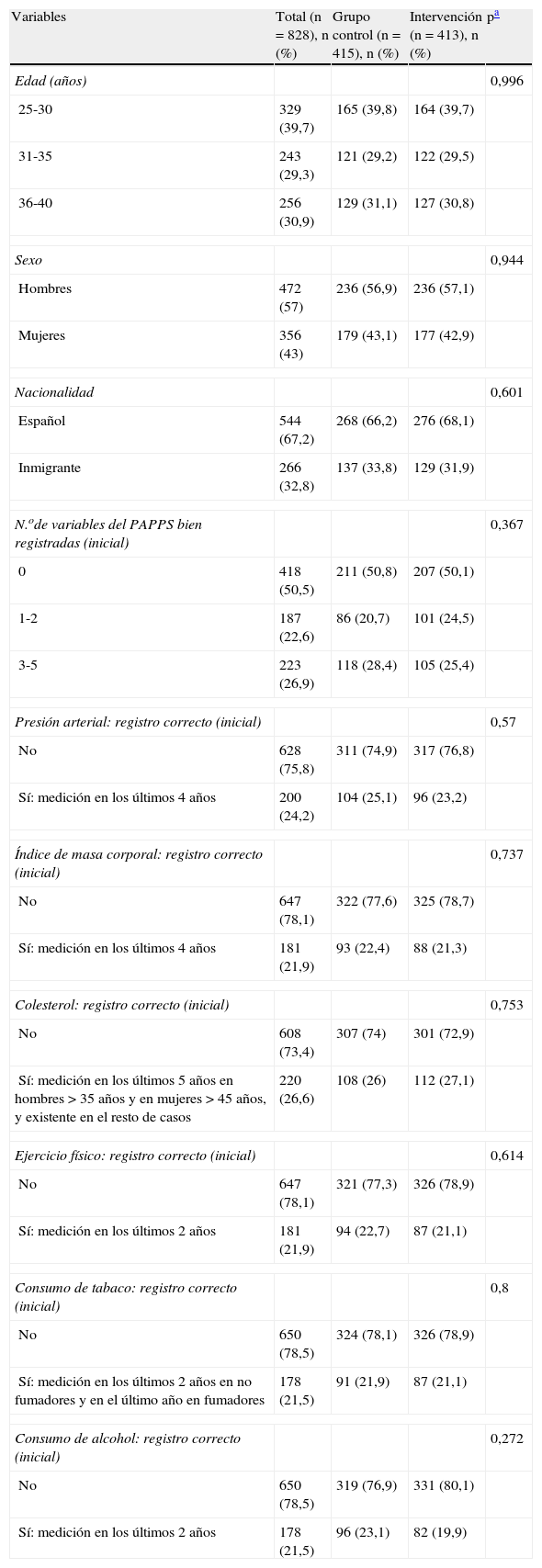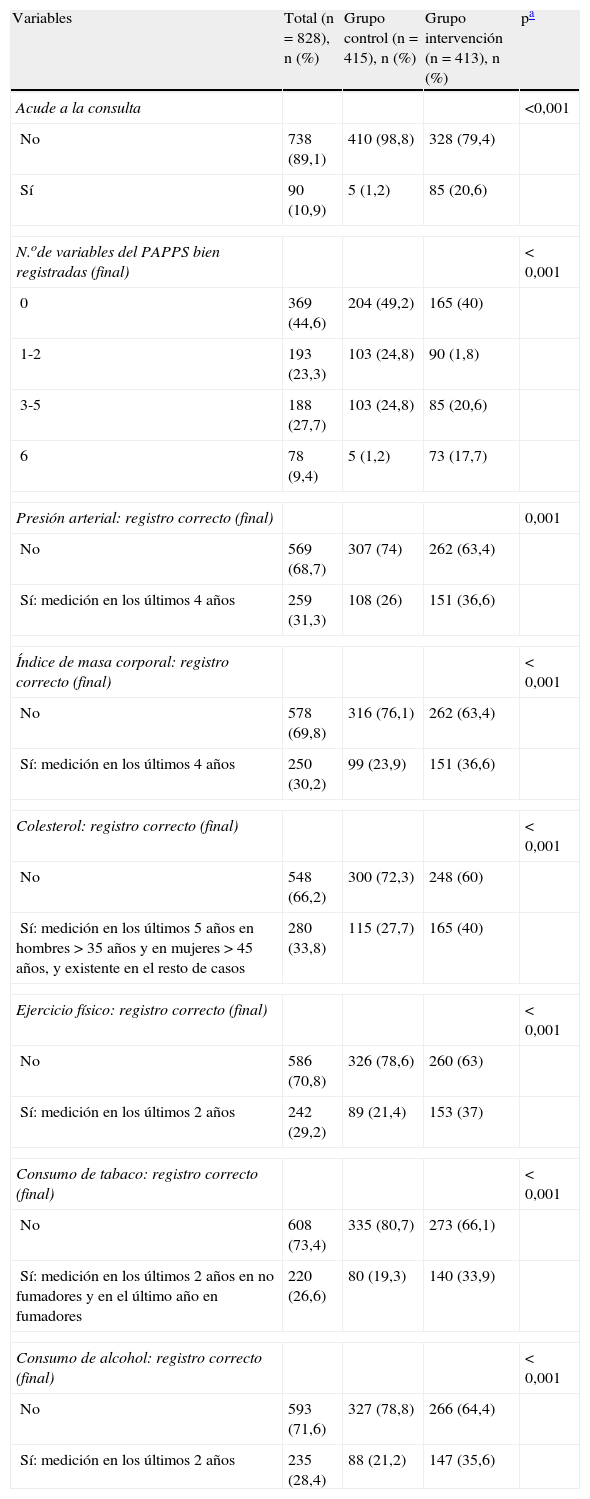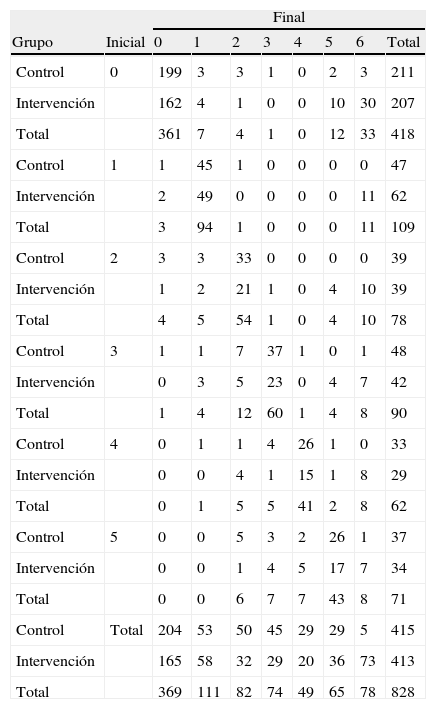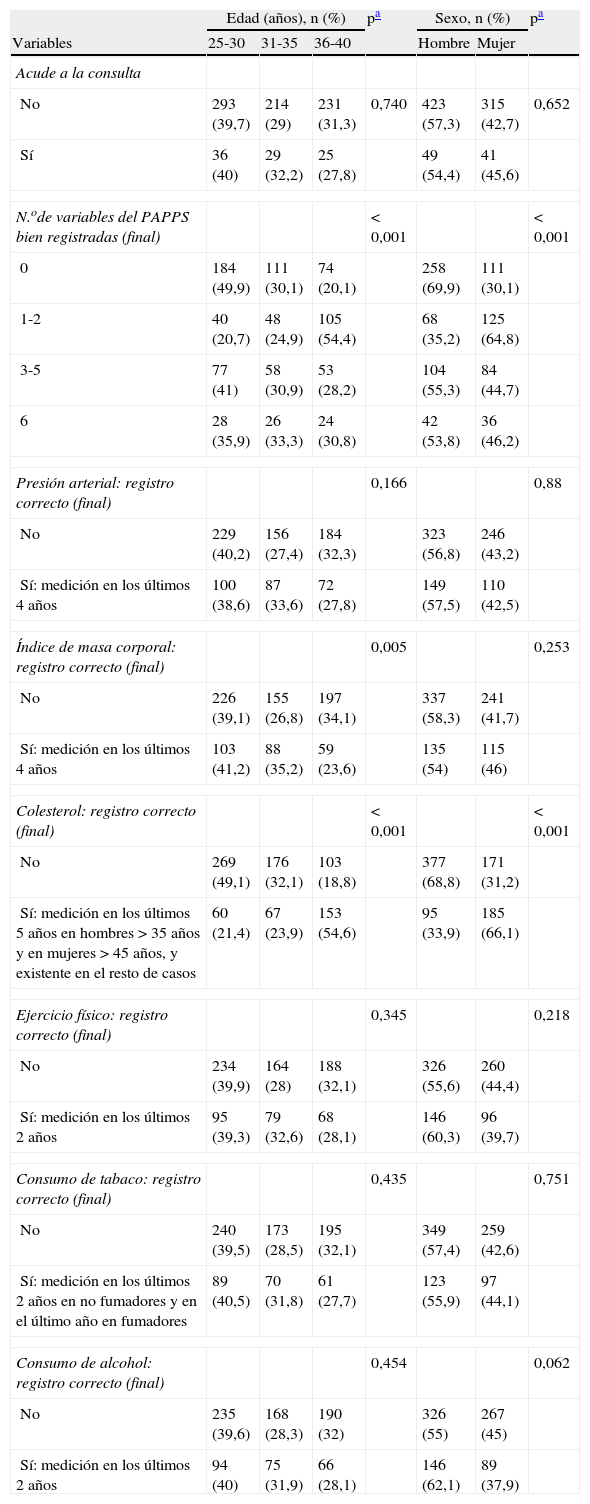Evaluar la efectividad de una intervención para aumentar la participación entre la población joven en el Programa de Actividades Preventivas y Promoción de la Salud (PAPPS) y el registro de sus variables. Evaluar diferencias de registro por edad y sexo.
MétodoDiseño: ensayo clínico controlado y aleatorizado. Ámbito: centro de atención primaria de Palamós. Sujetos: 828 personas entre 25 y 40 años asignadas a una enfermera con alguna variable del PAPPS indebidamente cumplimentada: 415 en grupo control y 413 en grupo intervención. Intervención: carta para realizar el PAPPS y llamada si tras 3 semanas responden menos del 10%. Variables: edad, sexo, nacionalidad, acudir a consulta, número de variables del PAPPS bien registradas y registro adecuado de cada una inicial y final. Análisis estadístico: descriptivo univariable y bivariable, intervalo de confianza del 95%, RRR y NNT.
ResultadosGrupos heterogéneos respecto a acudir a la consulta: 5 (1,2%) del grupo control y 85 (20,6%) del grupo de intervención (p<0,001), NNT=5 (IC del 95%, 4-7) y registro completo adecuado del PAPPS: 5 (1,2%) del grupo control y 73 (17,7%) del grupo intervención (p<0,001), NNT=6 (IC del 95%, 5-8). Se encontraron diferencias en la edad y el sexo en relación con el número de variables bien registradas y el registro del colesterol (p<0,001) y entre la edad y el índice de masa corporal (p=0,005).
ConclusionesLa estrategia consiguió aumentar significativamente el número de personas que realizaron el PAPPS y su registro, influyendo la edad y el sexo.
To evaluate the effectiveness of an intervention to increase the participation among young people in the Health Prevention and Promotion Activities Programme (PAPPS) and the register of their variables. To evaluate differences in registering based on age and sex.
MethodDesign: randomized, controlled clinical trial. Setting: Palamós primary care centre. Participants: A total of 828 people between the ages of 25 and 40 assigned to a nurse with one of the PAPPS variables improperly completed: 415 in control group and 413 in intervention group. Intervention: letter to complete the PAPPS and phone call if the response after three weeks was less than 10%. Variables: age, sex, nationality, clinic attendance, number of variables of PAPPS variables properly completed and the correct registration of each one at the beginning and end of the period. Statistical analysis: univariate and bivariate analysis, 95% confidence interval, RRR and NNT.
ResultsHeterogeneous groups as regards clinic attendance: 5 (1.2%) of control and 85 (20.6%) of intervention group, NNT=5 (95% CI, 4-7); and properly completed registration of PAPPS (P<.001): 5 (1.2%) of control and 73 (17.7%) of intervention, NNT=6 (95% CI, 5-8). At the end, there were differences with regard to age and sex in the number of variables completed and in the registration of cholesterol (P<.001), and only in regard to age in body mass index (P=.005).
ConclusionsThe strategy significantly increased the number of people who completed the PAPPS and their registration. Sex and age influenced the completion.
Artículo
Comprando el artículo el PDF del mismo podrá ser descargado
Precio 19,34 €
Comprar ahora










